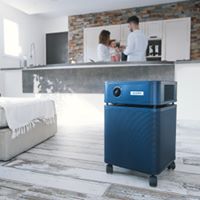
The Elite Athlete Air Quality and Recovery: Real-World Solutions
Modern athletes have more information than ever at their fingertips, and using that knowledge requires the right plan to recover deeper and faster. For years, we have seen mystery illnesses and poor regeneration, and wish there was more investigation of air quality. Training demands that rest be complete and without complications, and poor air quality certainly interferes in the recovery of an athlete.
Not surprisingly, many coaches in elite sport search for marginal gains by looking at small areas in performance that they can manipulate. However, from what we have seen, most of those cases need to focus on bigger factors. This article tackles the topic of clean air effect on the elite athlete, an investigation into common and sometimes rare problems that can make a difference between an athlete winning or sitting on the sidelines.
The Horrors of What Elite Athletes Breathe and What to Consider
You could argue that what I am sharing is fear mongering, and I will be honest—the goal is to wake the reader up to how bad the air quality is sometimes. Some environments are utopian, and the air is clean and pure, while in other areas simply walking outside is a health hazard. Take a look at Beijing, where training indoors is necessary because there is too much pollution outside

Indoor Air is where you can control the outcome
Outdoors is not the only problem, however; indoor air is also a health hazard. Anyone who lived through the 1980s remembers the radon scare that permeated the news cycle. There are plenty of training facilities nationally and internationally, and in some cases the conditions are awful, even for pro teams. There are moldy air conditioning vents, chemical fumes, and even biohazard areas left open and unorganized. Imagine being an elite athlete learning PRI breathing next to an air vent blowing dust and pollen particles. So many athletes in sports try to master breathing patterns, but have no clue what they are breathing in.
When problem-solving look at the severity of the problem first. How many environments are bad, and how bad is the typical challenge we face? Coaches and trainers have spent years trying to polish the basics with training camps to get athletes a literal breath of fresh air, when, instead science shows us an investment in a year-round air purifier for apartment living would enhance recovery time and increase mental acuity. Summarizing strategy, consider the four following points:
Overall Air Pollution, Altitude and Stress Levels may or may not be factors you have control over. However you spend ⅓ of your life sleeping. This time is of paramount importance to an elite athlete. This is physical recovery time, this is mental recovery time (any athlete will tell you mental toughness is critical), and without sleep your emotional state is compromised. To operate at peak condition your home and locker room air must be cleared of all contaminants – otherwise your body is under attack while at rest.
Indoor Air Quality: A new house or building is a risk, as new buildings are designed to run energy efficiently, meaning they trap air from insulating materials inside. Offices are known to cause health problems if they are not managed and evaluated, as building codes are generally a little lax. Newer laws have changed the definition of a safe workplace, but sometimes even compliant offices have issues such as poor circulation during cold and flu season and other difficult factors. Offices are not like restaurants, as boards of health look for violations that may cause disease or injury, not optimization of health.
Many variables exist beyond the primary four mentioned, but stick with the list first before exploring tangents or smaller factors.
A typical athlete spends 16 hours indoors—the majority of the day—in a house or dormitory. A recreational athlete spends even more time indoors because they typically work at a job that increases the period of time even more. As you can see, nearly every coach talks about the other hours of training during a 24-hour period, but if it’s spent mainly indoors, shouldn’t that time be healthy for the athlete?
Toxic chemicals, allergens, mold, viruses, bacteria, and even harmful gases affect indoor air quality. Radon is still a problem, even with inspections and stricter standards put into law. Both long-term and short-term health make testing your residence and the athlete’s living quarters a very wise and ethical decision. Many good coaches and athletes simply don’t want to think about doing something productive because of budgets and the possible need to make changes if a problem is found to exist.

Deep Sleep: Air Purifiers to the Rescue
One simple advantage an athlete can have is spending one-third of their day breathing in better air, and an air purifier can make a big difference. Indoor air is worse than the outside, as plenty of toxic chemicals are in a house, as well as natural problems such as pollen and dust. Research supports the notion that air purifiers such as the Austin HealthMate do make a difference. On one hand, there are homes in rural areas that have natural air passing through, and on the other hand, there are high-rise condos and apartments with central air and sealed windows that can be trouble.
If you want to invest in changes, the use of a purifier in the bedroom is the most important step next to testing. Used on a regular basis, every night and in the locker room an air purifier such as the Austin HealthMate shortens recovery time and increases mental acuity. And at the very least it can keep talented athletes in the game by giving them the best opportunity of showing up at the competitions
Air Purifier, Air Purifier Australia, air quality, change, health, mold, recovery, sleep, stress, training, viruses, wellness